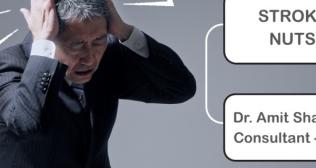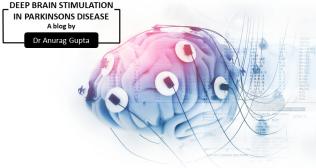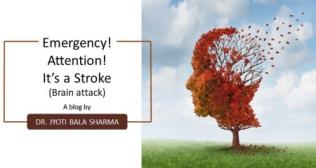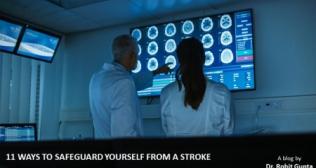
Types of Headaches and Their Treatments: What You Need to Know
A sudden dull ache across the forehead, or a sharp, stabbing pain behind the eyes; almost everyone has experienced the discomfort of a headache. It is one of the most common medical complaints worldwide, capable of disrupting our day, affecting our mood, and hindering our productivity. But not all head pain is the same. The term "headache" is an umbrella for a wide variety of conditions, each with its own distinct characteristics, triggers, and treatments.
Understanding the different types of headaches is the first step toward finding effective relief. Knowing what you are experiencing can help you manage the pain better and decide when it’s time to seek professional medical advice. This guide will explore the most common types of headaches and causes, their symptoms, and the best approaches to treatment.
Primary vs. Secondary Headaches: A Crucial Distinction
The first step in understanding any head pain is to know its classification. Headaches are broadly divided into two main categories:
- Primary Headaches: These are standalone conditions where the headache itself is the main problem. The pain is not caused by another underlying illness. Tension headaches, migraines, and cluster headaches are the most common examples.
- Secondary Headaches: These are headaches that occur as a symptom of another medical condition. The headache reasons can range from something simple, like dehydration or a sinus infection, to more serious issues like a head injury or a brain tumor. Treating a secondary headache involves addressing the root cause.
The Most Common Types of Primary Headaches
For most people, the headaches they experience are primary headaches. While there are many subtypes, three account for the vast majority of cases. Understanding their unique characteristics is key to proper management.
Tension Headaches
This is the most common type of headache experienced by adults. It is often described as a constant, dull ache or pressure on both sides of the head. Many people feel as if a tight band is wrapped around their forehead. The head pain is typically mild to moderate and is not usually accompanied by other symptoms like nausea. The most common headache reasons for tension headaches include stress, anxiety, poor posture (especially from long hours at a desk), fatigue, and eye strain.
Effective headache treatment often involves over-the-counter pain relievers like ibuprofen or paracetamol, along with stress-management techniques such as massage, meditation, and gentle neck stretches.
Migraine Headaches
A migraine is much more than just a bad headache. It is a complex neurological condition that causes a moderate to severe headache, typically characterized by an intense throbbing or pulsating pain on one side of the head. The headache symptoms are often debilitating and can include nausea, vomiting, and extreme sensitivity to light and sound. Some individuals experience a warning sign known as an "aura" before the head pain begins, which can involve visual disturbances like flashing lights.
The types of headaches and causes for migraines are varied, with common triggers including hormonal changes, certain foods and drinks, lack of sleep, and stress. Treatment ranges from over-the-counter pain relievers for milder attacks to prescription medications called triptans for more severe episodes.
Cluster Headaches
Cluster headaches are rare but are considered one of the most painful conditions known to medicine. They are characterized by an excruciatingly severe headache with a sharp, burning, or piercing pain located in or around one eye. The pain is so intense that individuals often cannot sit still during an attack. These headaches occur in cyclical patterns or "clusters," which can last for weeks or months, followed by periods of remission.
The exact cause is unknown, but it is linked to the hypothalamus region of the brain. During a cluster period, alcohol can be a potent trigger. Acute headache treatment is focused on providing rapid relief and includes high-flow oxygen therapy and fast-acting triptan medications.
Understanding Secondary Headaches
While less common, it's important to be aware of secondary headaches, as the head pain is a signal of another issue in your body. Some common headache reasons in this category include:
- Sinus Headaches: Caused by inflammation and congestion in the sinuses, leading to a deep, constant pain in the cheekbones, forehead, or bridge of the nose.
- Dehydration Headaches: Lack of adequate fluid intake can cause the brain to temporarily contract, leading to a dull ache.
- Medication Overuse Headaches (Rebound Headaches): Ironically, the frequent use of pain relief medication (more than two or three times a week) can lead to a persistent, daily headache.
- Post-Traumatic Headaches: These can develop after a head injury and may resemble tension headaches or migraines.
When Is a Headache a Medical Emergency?
Most headaches are not dangerous, but some can be a sign of a serious, life-threatening condition. It is crucial to know the "red flag" headache symptoms that require immediate medical attention.
Seek emergency care if you experience:
- A sudden, severe headache that comes on like a "thunderclap."
- A headache accompanied by a high fever, stiff neck, confusion, or seizures.
- A headache following a head injury.
- A headache that worsens with coughing or straining.
- Numbness, weakness, or paralysis on one side of the body.
- Difficulty speaking or understanding speech.
- A significant change in the pattern of your usual headaches.
Finding the Right Headache Treatment and Prevention
Beyond specific medications for different types of headaches, lifestyle management plays a key role in prevention.
- Identify Your Triggers: Keep a headache diary to track your activities, diet, sleep patterns, and stress levels to identify what might be causing your head pain.
- Manage Stress: Practice relaxation techniques such as deep breathing, yoga, or mindfulness.
- Prioritize Sleep: Aim for 7-9 hours of consistent, quality sleep per night.
- Stay Hydrated: Drink plenty of water throughout the day.
- Exercise Regularly: Regular physical activity can help reduce the frequency and intensity of some types of headaches.
Taking Control of Your Head Pain
Living with frequent headaches can be debilitating, but you don't have to simply endure the pain. By understanding the specific type of headache you are experiencing and its triggers, you can take control. Working with your doctor to find the right headache treatment plan and making proactive lifestyle changes can dramatically reduce the impact of head pain on your life, allowing you to focus on the things that matter most.
Frequently Asked Questions
1. What is the difference between a tension headache and a migraine?
A tension headache typically causes a dull, band-like pressure on both sides of the head. A migraine causes a severe, throbbing pain, usually on one side, and is often accompanied by nausea and sensitivity to light and sound.
2. Can dehydration cause a serious headache?
Yes, dehydration can cause a moderately painful headache. While usually not dangerous, it serves as an important signal that your body needs fluids immediately.
3. How do I know if my headache is dangerous?
A headache that is sudden and excruciatingly severe (the "worst headache of your life"), or is accompanied by symptoms like fever, stiff neck, confusion, or numbness, is a medical emergency.
4. What is a "rebound headache"?
A rebound headache is a chronic, daily headache caused by the overuse of pain-relief medication. The only way to stop them is to discontinue the medication under a doctor's supervision.
5. Are daily headaches normal?
No, experiencing a headache every day is not normal and should be evaluated by a doctor to determine the underlying cause and find an effective treatment plan.



















